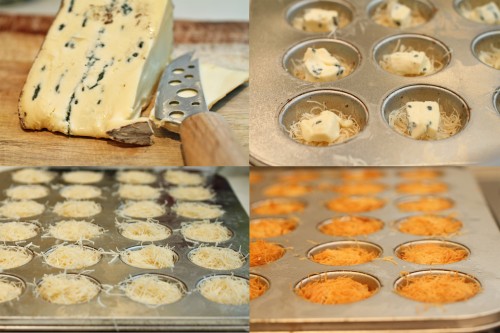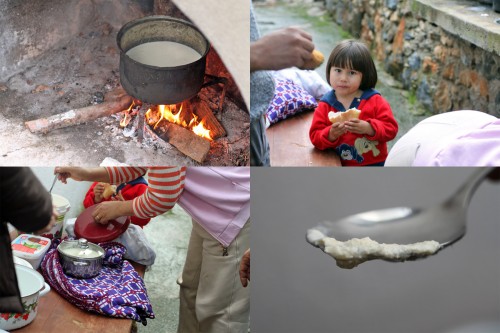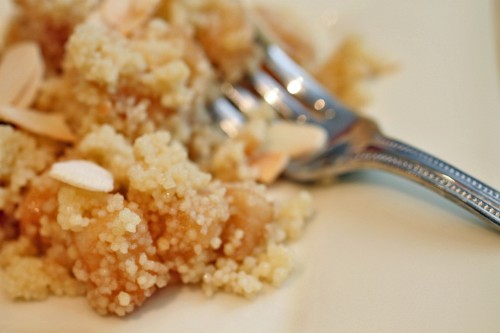Pão de Queijo (Brazilian Cheese Bread)
One of my favorite Brazilian restaurants in the city is Casa. Tucked away on a quiet block in the West Village, this cozy spot gets it right – spot on flavors, perfect portions, delicious wines, an intimate setting. The feijoada and moqueca are killer, but I can never make it through a dinner there without ordering their little basket of farm cheese bread, or pão de queijo. These little cheesy, chewy, buttery balls are perfection, so I decided to dig further to satisfy my cheese bread cravings at home.
Brazilian cuisine is completely amazing to me because of the number and span of cultures that have contributed to it – Portuguese, African, Native American, Japanese, Syrian, Lebanese. Cassava or yucca is a staple ingredient in Brazilian cooking, and the resulting flour is used, in its coarse form, for farofa, and its finely ground form to make these lovely rolls.
We are familiar with one form of cassava or manioc starch, which is tapioca, but Brazilians have a sour fermented version, polvilho azedo, and a sweet one, polvilho doce. Traditionally, both are used to make this bread, but, on the fly, I only found plain manioc starch and went with it. If you can find both kinds, I suggest using them in 2/3rd sour / 1/3rd sweet ratio.
The great thing about these is, if you have a stand mixer, they are really easy to make. Otherwise, it’s a bit of a work out and requires some sweat to knead! The procedure and form is not unlike those lovely, French gougères, but the result here is a lot more dense and toothsome than that. They are the perfect dinner roll – buttery and cheesy with a delicately crunchy exterior. I added a touch of black pepper and nutmeg, not traditional but I think gives it a balanced flavor. Be forewarned, they are addictive…Enjoy!
Ingredients
Yields 20 golf ball-sized pieces
1 ½ cup manioc or tapioca starch
½ cup all-purpose flour*
2 tsps kosher salt
1 tsp sugar
½ tsp black pepper
pinch of ground nutmeg
1 cup milk
6 tbsps stick butter
3 eggs
1 ½ cups finely grated parmesan
Procedure**
Preheat oven to 350° F.
Fit a stand mixer with a paddle attachment. In the bowl of the stand mixer, sift together starch, flour, salt, sugar, and spices. In a small saucepan, heat milk and butter over medium-high heat until mixture comes up to a full boil (make sure it doesn’t boil over!). Add milk mixture to dry ingredients and mix on low for 2 minutes.
In a small bowl, beat together 1 egg and 1 egg yolk. With the mixer still running, add eggs to the dough. When eggs are incorporated, add grated parmesan and mix/knead for another 5 minutes, scraping down at intervals. Refrigerate for a minimum of 1 hour.
Using a small ice cream scoop or your hands, portion out dough into even-sized pieces. Heavily (and repeatedly) flour hands and roll portioned pieces into balls. Place on a parchment-lined baking sheet. In a small bowl, beat the other egg. Brush dough balls with egg wash and bake for 25 to 30 minutes until browned and the outside is crisp and a bit cracked. Serve immediately.
*If you want these to be gluten-free, just use manioc starch in lieu of all-purpose flour here.
**A few points on procedure. The dough can be kneaded traditionally – that is, by hand – if desired. It just takes a bit of upper body strength. The resulting dough should be soft and very sticky. If not baking immediately (or that day), the dough can be frozen when formed into balls and popped in the oven at a later time. This bread is best served warm and straight from the oven as it turns a bit gummy when cold (though, of course, if can be reheated).



































